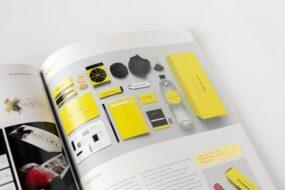
The world of fashion is constantly evolving, and with advancements in technology, the industry has witnessed a fascinating intersection between 3D modeling and fashion design. 3D modeling has revolutionized the way designers create, showcase, and manufacture their collections. It has brought forth a plethora of innovative possibilities and opened doors to new design techniques. In this blog post, we will explore the exciting innovations and trends that have emerged at the intersection of 3D modeling and fashion design.
Virtual Fashion Shows
One of the most significant advancements in the fashion industry is the advent of virtual fashion shows. With 3D modeling, designers can create immersive digital environments that replicate the experience of a traditional runway show. These virtual shows allow designers to transcend geographical boundaries and showcase their collections to a global audience. Furthermore, 3D modeling enables the incorporation of interactive elements, such as 360-degree views and real-time animations, making the experience even more engaging and dynamic.
Digital Prototyping and Fit Testing
Traditionally, fashion designers have relied on physical prototypes and numerous fittings to perfect their designs. However, 3D modeling has revolutionized this process by enabling digital prototyping and fit testing. Designers can create accurate digital representations of their garments and simulate how they would look and fit on different body types. This saves time, reduces material waste, and allows for quicker iterations, ultimately leading to more efficient and sustainable design processes.
Customization and Personalization
3D modeling has made customization and personalization more accessible in the fashion industry. Designers can now create digital models that can be easily adjusted to cater to individual preferences and body measurements. This level of customization enables customers to have unique garments tailored to their specific needs and preferences. It also opens doors for made-to-order and on-demand manufacturing, reducing overproduction and minimizing waste.
Sustainable Design and Material Innovation
Sustainability is a growing concern in the fashion industry, and 3D modeling has played a significant role in promoting more sustainable design practices. By creating digital prototypes and conducting virtual simulations, designers can experiment with different materials and evaluate their environmental impact before physically producing them. Additionally, 3D modeling allows for the exploration of innovative materials and textures, such as recycled or bio-fabricated materials, further pushing the boundaries of sustainable fashion.
Collaborations with Technology Companies
The intersection of 3D modeling and fashion design has spurred collaborations between fashion designers and technology companies. These partnerships have led to the development of cutting-edge tools and software specifically tailored to the needs of the fashion industry. Companies specializing in 3D modeling and virtual reality have worked closely with designers to create intuitive interfaces, realistic renderings, and powerful simulation capabilities, enhancing the creative process and driving innovation.
3D Printing and Additive Manufacturing in Fashion
3D modeling has paved the way for the integration of 3D printing and additive manufacturing in the fashion industry. Designers can now create intricate and complex designs that were once challenging to achieve through traditional manufacturing methods. 3D printing allows for the production of custom-made garments and accessories with precise detailing and unique structures. This technology enables designers to experiment with unconventional materials and push the boundaries of creativity, resulting in truly innovative fashion pieces.
Virtual Try-On and Augmented Reality (AR)
Virtual try-on and augmented reality (AR) technologies have gained prominence in the fashion industry, thanks to 3D modeling. With virtual try-on, customers can visualize how a garment would look and fit on them without physically trying it on. Using 3D models and body scanning, virtual try-on platforms create realistic representations of the garments, enabling customers to make more informed purchasing decisions. Augmented reality takes this a step further by allowing customers to virtually place garments on themselves using their smartphones or AR devices, enhancing the shopping experience and bridging the gap between online and offline retail.
Digital Fashion and NFTs
The rise of digital fashion and non-fungible tokens (NFTs) has been facilitated by 3D modeling. Digital fashion involves creating and selling virtual garments that exist only in the digital realm. With 3D modeling, designers can design and showcase their digital creations, which can be worn and displayed in virtual environments or social media platforms. NFTs have further revolutionized digital fashion by allowing designers to sell and authenticate their virtual designs as unique assets. This emerging trend presents new opportunities for creativity, self-expression, and the exploration of fashion beyond physical boundaries.
Collaboration and Accessibility
3D modeling has facilitated collaboration and accessibility within the fashion industry. Designers can now collaborate remotely and share their 3D models, allowing for seamless teamwork across geographical boundaries. Additionally, 3D modeling has made fashion more accessible to aspiring designers, students, and independent creators. With affordable or open-source software and online communities, individuals can learn and experiment with 3D modeling, bringing fresh perspectives and democratizing the creative process.
Ethical Considerations and Challenges
As with any technological advancement, the intersection of 3D modeling and fashion design also raises ethical considerations and challenges. Issues such as digital piracy, intellectual property rights, and the impact on traditional craftsmanship need to be addressed as the industry embraces these new technologies. Additionally, ensuring inclusivity and diversity in digital representations and algorithms used in 3D modeling is crucial to prevent perpetuating biases or exclusions.
AI-Powered Design Assistance
The intersection of 3D modeling and fashion design has also led to the development of AI-powered design assistance tools. These tools leverage machine learning algorithms to analyze vast amounts of fashion data, trends, and consumer preferences. By incorporating AI into the design process, designers can receive intelligent suggestions, generate design variations, and predict fashion trends. This technology assists designers in making informed decisions, enhancing creativity, and staying ahead in a rapidly evolving industry.
Virtual Wardrobes and Digital Styling
With 3D modeling, virtual wardrobes and digital styling have become a reality. Customers can create digital versions of their wardrobes and experiment with outfit combinations virtually. By integrating 3D models of garments, accessories, and personal avatars, individuals can curate and visualize their style choices without physically trying on each item. This virtual styling experience offers convenience, inspiration, and the opportunity to explore new fashion possibilities.
Real-Time Design Collaboration and Feedback
3D modeling has revolutionized the way fashion designers collaborate and receive feedback. With real-time design collaboration tools, multiple designers can work on the same 3D model simultaneously, regardless of their physical location. This facilitates efficient teamwork, accelerates the design process, and fosters creativity through diverse perspectives. Additionally, stakeholders such as buyers, retailers, and consumers can provide instant feedback on digital prototypes, leading to iterative improvements and better end products.
Digital Fashion Marketing and Social Media
The intersection of 3D modeling and fashion design has transformed the landscape of fashion marketing and social media. Digital fashion content, including 3D models, virtual fashion shows, and interactive experiences, has gained popularity on social media platforms. Influencers and brands collaborate to create visually stunning and immersive campaigns that captivate audiences. This trend blurs the line between reality and digital fashion, creating new marketing opportunities and expanding the reach of fashion brands.
Training and Education in Fashion Design
3D modeling has also influenced the training and education landscape in fashion design. Educational institutions are incorporating 3D modeling and digital design tools into their curricula to equip aspiring designers with the necessary skills for the industry. Students can learn about garment construction, pattern making, and visualization using virtual tools, providing a solid foundation for their future careers. Additionally, online platforms and tutorials make 3D modeling more accessible, allowing individuals to learn at their own pace and explore their creativity. 3D Modeling Services provide a freeform pattern on its surface.
Virtual Fashion Retail and E-Commerce
The intersection of 3D modeling and fashion design has transformed the retail landscape, particularly in the realm of virtual fashion retail and e-commerce. Using 3D models, fashion brands can create virtual stores or digital showrooms where customers can browse and shop for garments in a virtual environment. This immersive experience bridges the gap between online and offline shopping, allowing customers to visualize the fit, texture, and details of the garments before making a purchase. Virtual fashion retail offers convenience, and personalized experiences, and reduces the need for physical inventory, thereby minimizing costs and environmental impact.
Gamification and Virtual Fashion
The combination of 3D modeling and fashion design has paved the way for gamification and virtual fashion experiences. In virtual gaming platforms and virtual reality (VR) environments, players can customize their avatars’ appearance by dressing them in digital garments. These digital fashion items can be created using 3D modeling techniques, allowing for endless possibilities in virtual fashion expression. This trend has opened up new avenues for collaboration between fashion designers and game developers, creating a crossover between the worlds of fashion and gaming.
Fashion Forecasting and Data Analysis
3D modeling has revolutionized fashion forecasting and data analysis. By analyzing data from social media, online fashion platforms, and consumer behavior, fashion analysts and designers can gain insights into emerging trends and consumer preferences. These insights, combined with 3D modeling capabilities, allow designers to create fashion collections that align with market demand and cater to specific target audiences. Data-driven fashion design has the potential to reduce fashion waste, increase sales, and provide customers with garments that resonate with their individual style.
Virtual Fitting Rooms and Body Scanning
Virtual fitting rooms have become increasingly popular in the fashion industry, thanks to advancements in 3D modeling and body scanning technologies. Customers can use their smartphones or dedicated devices to capture their body measurements, which are then used to generate a personalized 3D model of their body. With this virtual representation, customers can try on digital versions of garments and see how they would fit and look on their specific body shape. Virtual fitting rooms enhance the online shopping experience, minimize returns, and help customers make more confident purchasing decisions.
Fashion Visualization and Concept Development
The use of 3D modeling in fashion design has transformed the visualization and concept development stages of the design process. Designers can create realistic 3D renderings of their concepts, enabling them to visualize the garments from all angles and experiment with different color palettes, fabrics, and silhouettes. This digital visualization enhances communication between designers, clients, and manufacturers, ensuring that everyone involved has a clear understanding of the intended design. It also facilitates better decision-making and reduces the need for physical prototypes, saving time and resources.
Fashion Simulation and Fabric Behavior
With the aid of 3D modeling, designers can simulate fabric behavior and draping effects digitally. This capability allows them to visualize how different fabrics will drape, flow, and interact with the body in a virtual environment. By accurately representing the physical properties of fabrics in the digital realm, designers can make informed decisions about fabric choices and achieve desired aesthetic effects. This simulation capability saves time and resources by reducing the need for multiple physical prototypes and fabric samples.
Virtual Fashion Influencers and Avatars
The emergence of virtual fashion influencers and avatars has been made possible through the integration of 3D modeling in fashion design. These digital personalities, created using 3D modeling techniques, have gained popularity on social media platforms and in marketing campaigns. Virtual fashion influencers allow brands to showcase their garments on digital models, reaching a wide audience and exploring new realms of creativity. Additionally, users can create their own digital avatars and style them with virtual garments, fostering self-expression and digital fashion communities.
Sustainable Supply Chain and Reduced Waste
3D modeling has the potential to revolutionize the fashion supply chain and reduce waste. By digitally creating and visualizing garments, designers can minimize the need for physical samples and prototypes, reducing material waste. Additionally, virtual fashion shows and virtual prototyping enable brands to showcase their collections without the environmental footprint associated with traditional manufacturing and logistics. The adoption of 3D modeling in the fashion industry contributes to a more sustainable and eco-friendly approach to design, production, and consumption.
Accessibility and Inclusivity in Fashion
According to Academic Master, 3D modeling technology has the power to promote accessibility and inclusivity in the fashion industry. Digital models can be easily adjusted to represent a diverse range of body shapes, sizes, and abilities, ensuring that fashion is inclusive and representative of all individuals. This technology enables designers to create garments that cater to different body types, providing a more inclusive and body-positive fashion experience. Furthermore, the availability of 3D modeling tools and resources online facilitates access to fashion design education and opportunities for aspiring designers worldwide.
Integration of Virtual and Physical Fashion
The integration of virtual and physical fashion is a trend that has emerged at the intersection of 3D modeling and fashion design. Designers and brands are exploring the concept of hybrid fashion, combining physical garments with digital elements. This fusion opens up new avenues for creativity, storytelling, and expression, as digital embellishments, animations, and effects can be incorporated into physical garments. The combination of 3D modeling and physical fashion blurs the line between the digital and real worlds, creating exciting and immersive experiences for both designers and consumers.
Personalization and Customization
3D modeling has opened up opportunities for personalized and customized fashion design. With the ability to create digital 3D models of garments, designers can offer made-to-measure options and tailor garments to individual customers’ body measurements and preferences. This level of customization provides a unique and personalized experience, allowing customers to have clothing that fits them perfectly. Furthermore, 3D modeling allows for the customization of design elements such as patterns, colors, and details, enabling customers to create truly one-of-a-kind pieces.
Rapid Prototyping and Iterative Design
The integration of 3D modeling in fashion design enables rapid prototyping and iterative design processes. Designers can quickly create digital prototypes and iterate on designs without the need for physical materials and resources. Through digital visualization and 3D modeling software, they can make adjustments, experiment with different iterations, and refine their designs more efficiently. This iterative process reduces time-to-market and allows for faster product development cycles, giving designers the flexibility to explore and refine their creative ideas.
Historical and Cultural Preservation
3D modeling in fashion design also contributes to the preservation of historical and cultural garments. By creating accurate digital replicas of traditional clothing and historical garments, designers and historians can ensure the longevity and accessibility of these valuable pieces. 3D models allow for detailed documentation, preservation of intricate details, and the ability to study and appreciate these garments without the risk of damage or deterioration. This application of 3D modeling contributes to the preservation and celebration of diverse cultural heritages in the fashion industry.
Sustainability and Material Innovation
Sustainability and material innovation are areas where 3D modeling has made significant contributions to the fashion industry. By digitally simulating fabric behavior and characteristics, designers can explore sustainable materials and experiment with alternative fabrics without the need for physical samples. This digital approach promotes more sustainable material choices and reduces the environmental impact associated with traditional fabric sourcing. Additionally, 3D modeling allows for the exploration of innovative materials, such as biodegradable or recycled materials, pushing the boundaries of sustainable fashion design.
Virtual Reality Fashion Experiences
Virtual reality (VR) experiences in fashion are gaining traction with the help of 3D modeling. Fashion brands are exploring the possibilities of immersive VR experiences where customers can virtually attend fashion shows, explore virtual showrooms, and interact with digital garments and accessories. This technology allows for a heightened level of engagement and immersion, creating memorable and interactive experiences for consumers. Virtual reality fashion experiences have the potential to revolutionize the way people engage with fashion, providing a unique and accessible platform for showcasing collections and storytelling.
Conclusion
The intersection of 3D modeling and fashion design brings forth a multitude of possibilities and benefits to the industry. From personalization and customization to rapid prototyping, sustainability, and virtual reality experiences, the integration of 3D modeling opens up new avenues for creativity, efficiency, and engagement. By embracing these innovations, fashion designers can push the boundaries of design, cater to individual preferences, and create more sustainable and inclusive fashion experiences. The ongoing advancements in 3D modeling continue to shape the future of fashion, paving the way for a more personalized, sustainable, and technologically driven industry.







